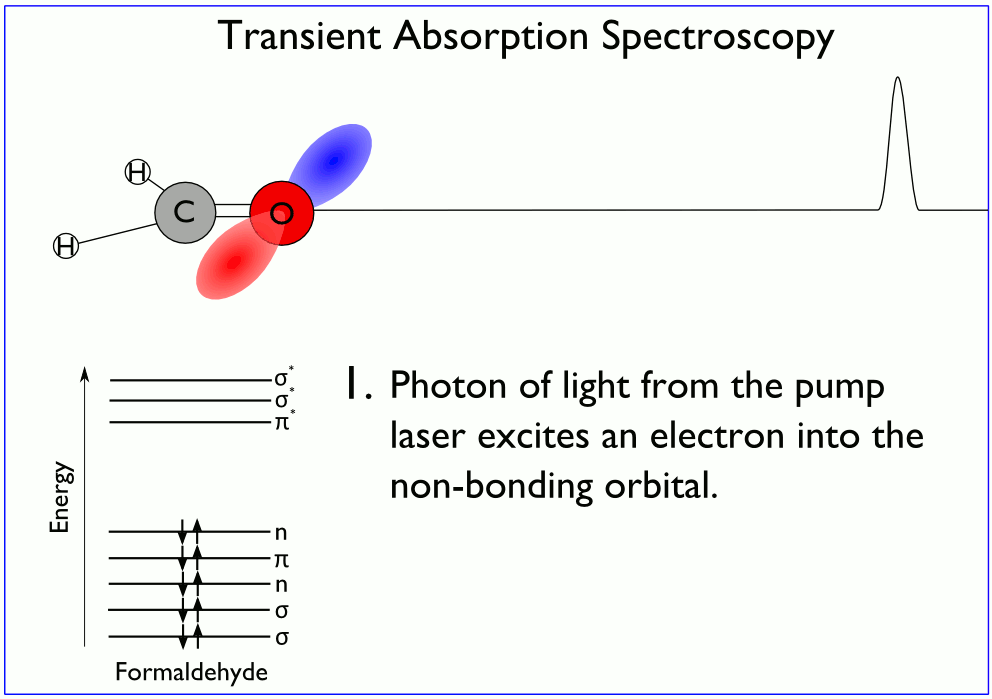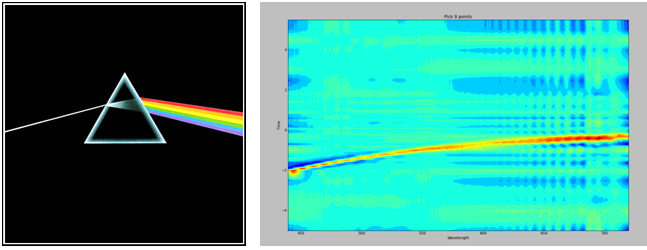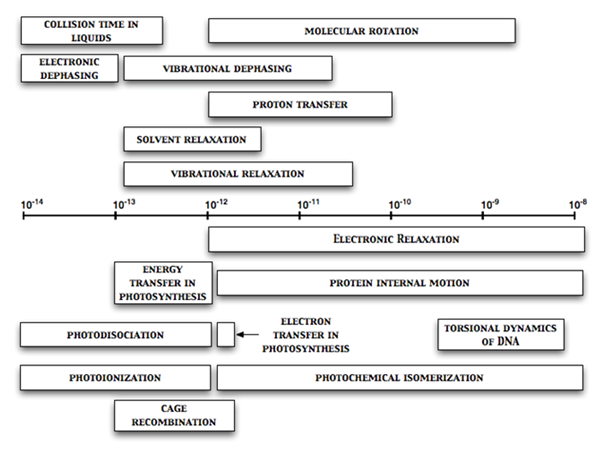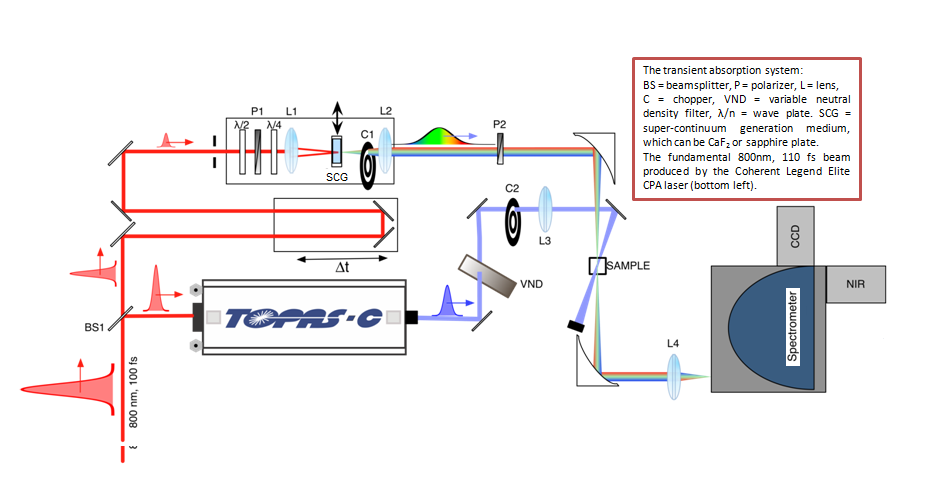Transient absorption spectroscopy (TrA) is a method for probing the details of molecular behaviour, such as movement of nuclei during a reaction, on chemically relevant timescales. In TrA, a laser pulse is first used to put a molecule in its excited state (photoexcitation), followed by a second pulse at some time delay which is absorbed by the molecule to form an absorption spectrum. By capturing spectra at many time delays, we can obtain information about behaviour of the molecule as it evolves in real time.


TrA is similar to multiflash photography: just as Edgerton pieces together various exposures to illustrate movement, one TrA spectrum pieces together spectra from various time delays to show the behaviour of a molecule
In one kind of TrA carried out at the Photon Factory, we use femtosecond (fs = 10-15 s) pump pulses with super-continuum probe to capture the UV/Vis/IR spectra of the initial molecular structure just after photoexcitation. This tells us how the molecule absorbs energy and what happens subsequently, and will help us better understand the conversion of light energy to useful forms – heat, electronic energy and mechanical motion. For us, the relevant timescales are tens of femtoseconds to a few nanoseconds (ns = 10-9 s). Very interesting chemical physics happens on this time scale:
The transient absorption system:
- The instrument response on the system is approximately 250fs
- Calcium fluoride crystal generates super-continuum from 350nm to 1100nm.
- Sapphire plate generates super-continuum from 420nm to 1500nm
- The delay stage gives a 1689ps of relative delay with a 0.68fs resolution.
- Travelling wave optical parametric generator TOPAS-C (by Light Conversion) provides tuneable single wavelength pulse from 280 to 2600nm.
The pump and probe beams are mechanically chopped to produce a sequence of pulses such as the following:
Absorption is calculated based on the equation
ΔOD=log10[(I0-IB)/(Isig-IP)]
and the pump (IP) and stray light (IB) windows allow us to correct for pump and stray light related noise.
- The data is plotted in two and three-dimensions using PyTrA, a programme written by Jacob Martin.

When femtosecond white light pulses propagate through any medium, different wavelengths will travel at different speeds; this is called group velocity dispersion (GVD) or ‘chirp’. This is essentially the same phenomenon that allows us to split white light with a prism.

- The software also handles the de-convolution of the chirp from the spectrum to get an accurate analysis of the signal.
- Single kinetic traces are fit to provide a good estimate of the kinetic parameters before a global analysis of the spectral-kinetic information is performed in IGOR (by WaveMetrics).
For those who are interested in the life and works of “Doc” H. E. Edgerton, there are several websites available, including the source of the image used in this document http://edgerton-digital-collections.org
For further reading on TrA see
Mergerle, U., Pugliesi, I., Schriever, C., Sailer, C. F., Riedle, E. Sub-50fs broadband absorption spectroscopy with tunable excitation: putting the analysis of ultrafast molecular dynamics on solid ground, Appl. Phys. B, 2009, 96, 215-231.
Andy Wang




